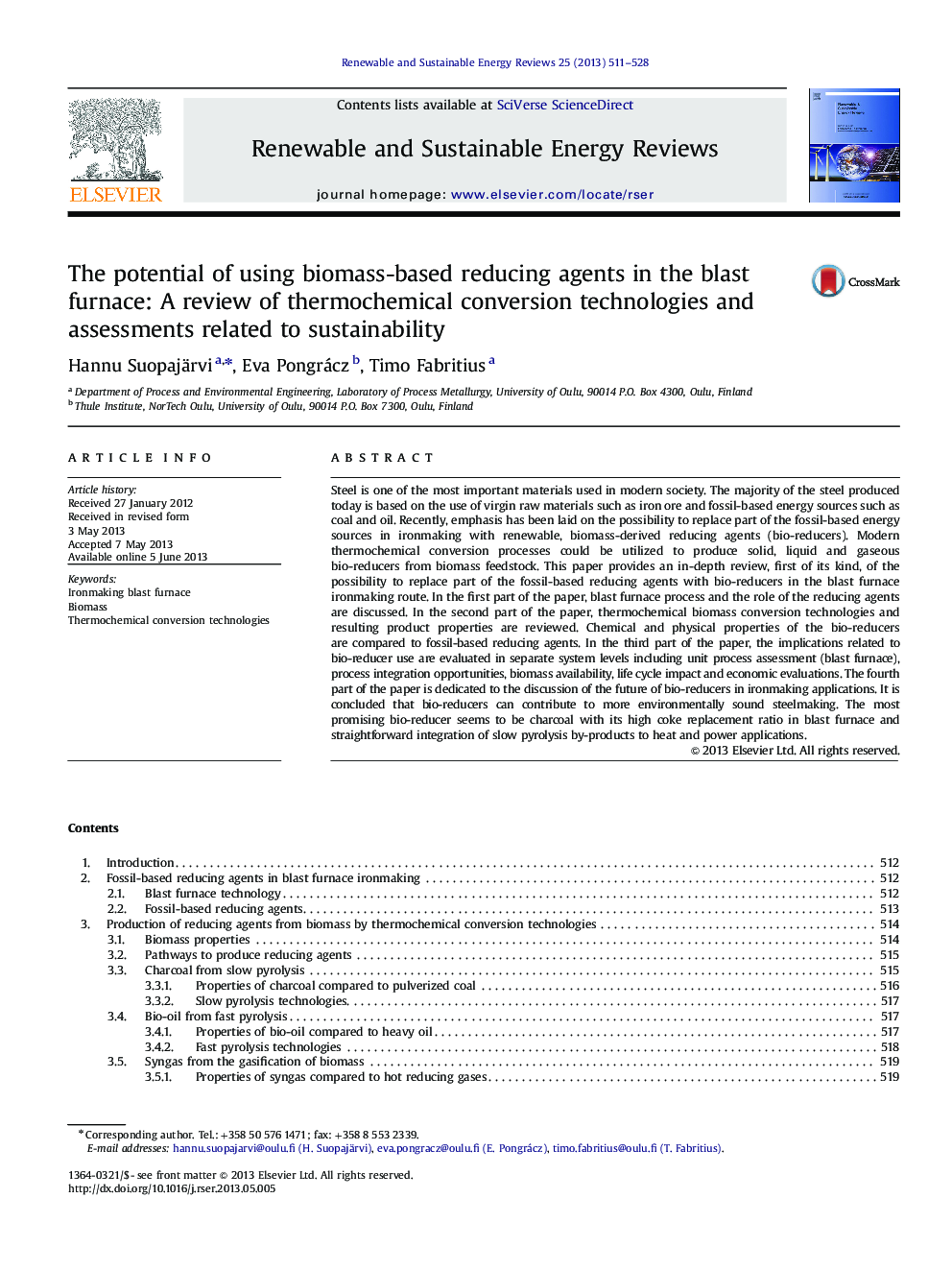| Article ID | Journal | Published Year | Pages | File Type |
|---|---|---|---|---|
| 8121724 | Renewable and Sustainable Energy Reviews | 2013 | 18 Pages |
Abstract
Steel is one of the most important materials used in modern society. The majority of the steel produced today is based on the use of virgin raw materials such as iron ore and fossil-based energy sources such as coal and oil. Recently, emphasis has been laid on the possibility to replace part of the fossil-based energy sources in ironmaking with renewable, biomass-derived reducing agents (bio-reducers). Modern thermochemical conversion processes could be utilized to produce solid, liquid and gaseous bio-reducers from biomass feedstock. This paper provides an in-depth review, first of its kind, of the possibility to replace part of the fossil-based reducing agents with bio-reducers in the blast furnace ironmaking route. In the first part of the paper, blast furnace process and the role of the reducing agents are discussed. In the second part of the paper, thermochemical biomass conversion technologies and resulting product properties are reviewed. Chemical and physical properties of the bio-reducers are compared to fossil-based reducing agents. In the third part of the paper, the implications related to bio-reducer use are evaluated in separate system levels including unit process assessment (blast furnace), process integration opportunities, biomass availability, life cycle impact and economic evaluations. The fourth part of the paper is dedicated to the discussion of the future of bio-reducers in ironmaking applications. It is concluded that bio-reducers can contribute to more environmentally sound steelmaking. The most promising bio-reducer seems to be charcoal with its high coke replacement ratio in blast furnace and straightforward integration of slow pyrolysis by-products to heat and power applications.
Keywords
Related Topics
Physical Sciences and Engineering
Energy
Renewable Energy, Sustainability and the Environment
Authors
Hannu Suopajärvi, Eva Pongrácz, Timo Fabritius,
